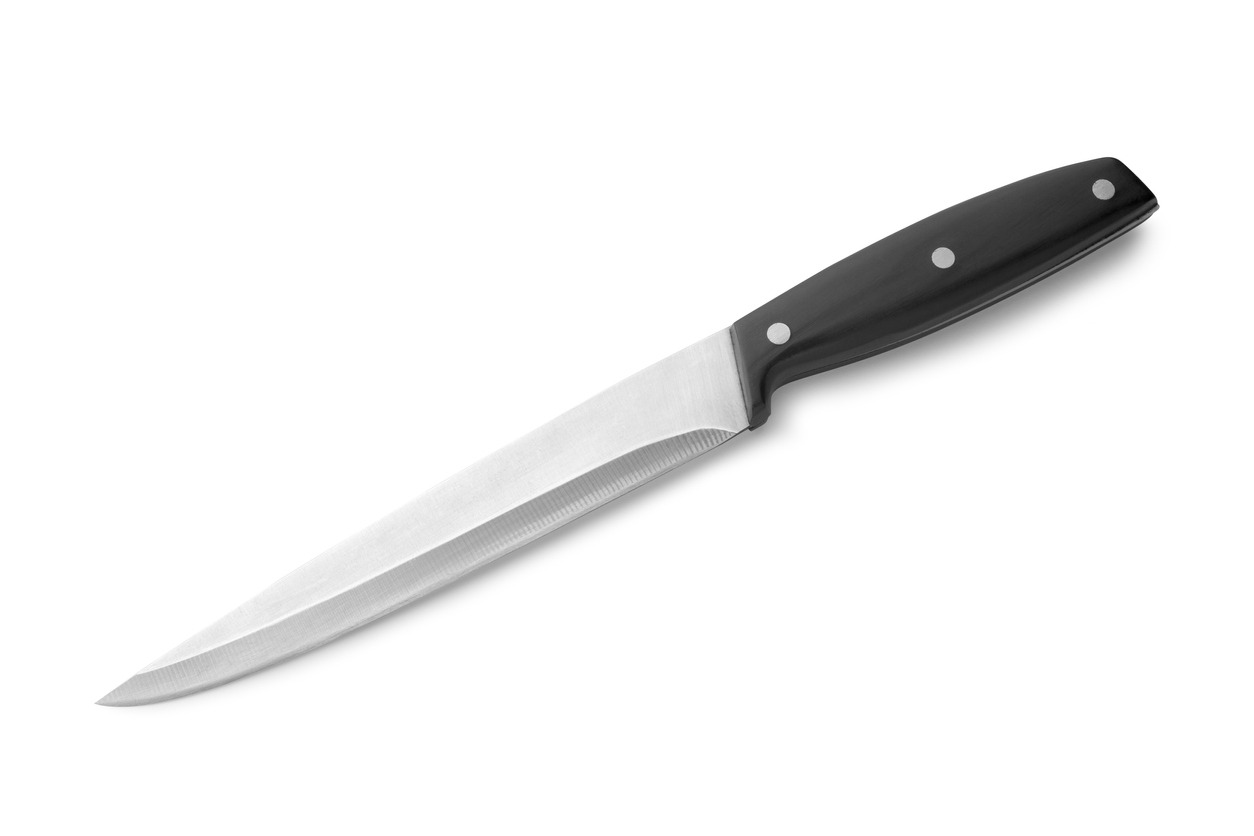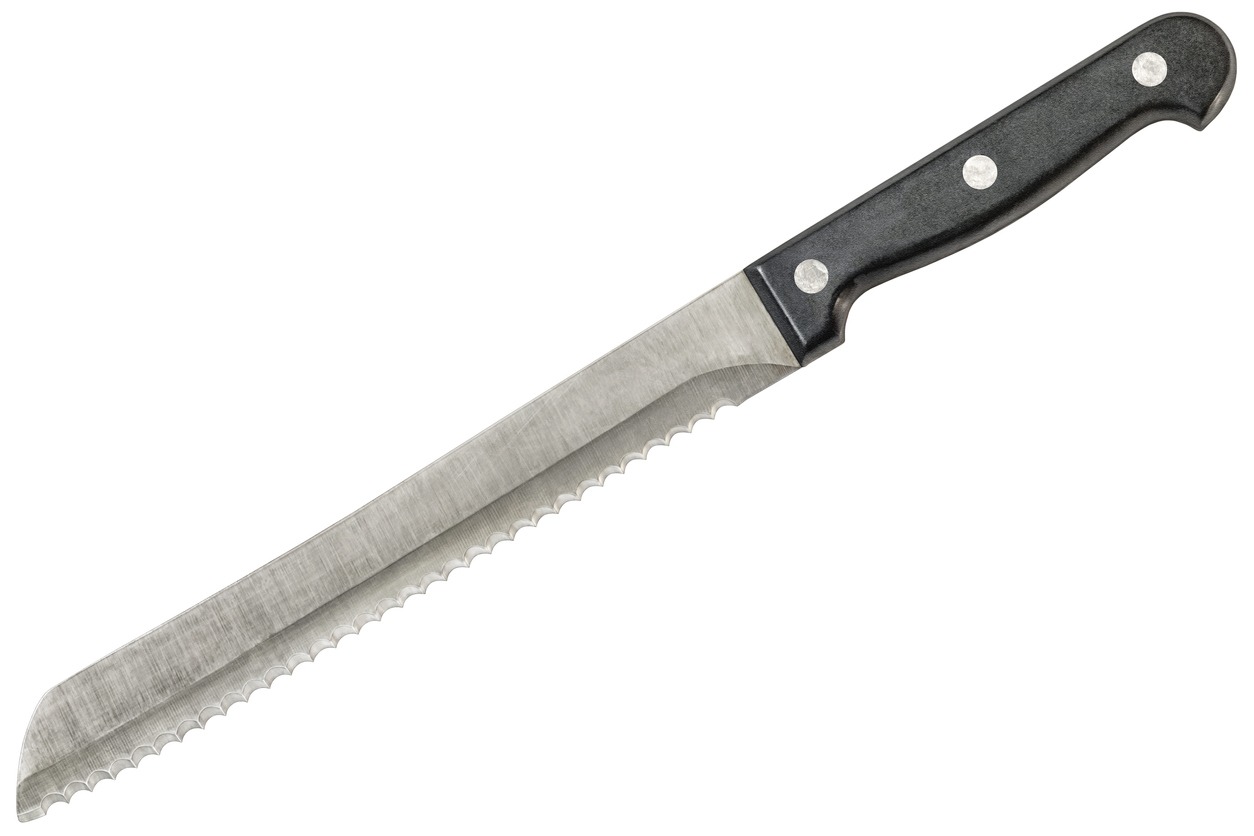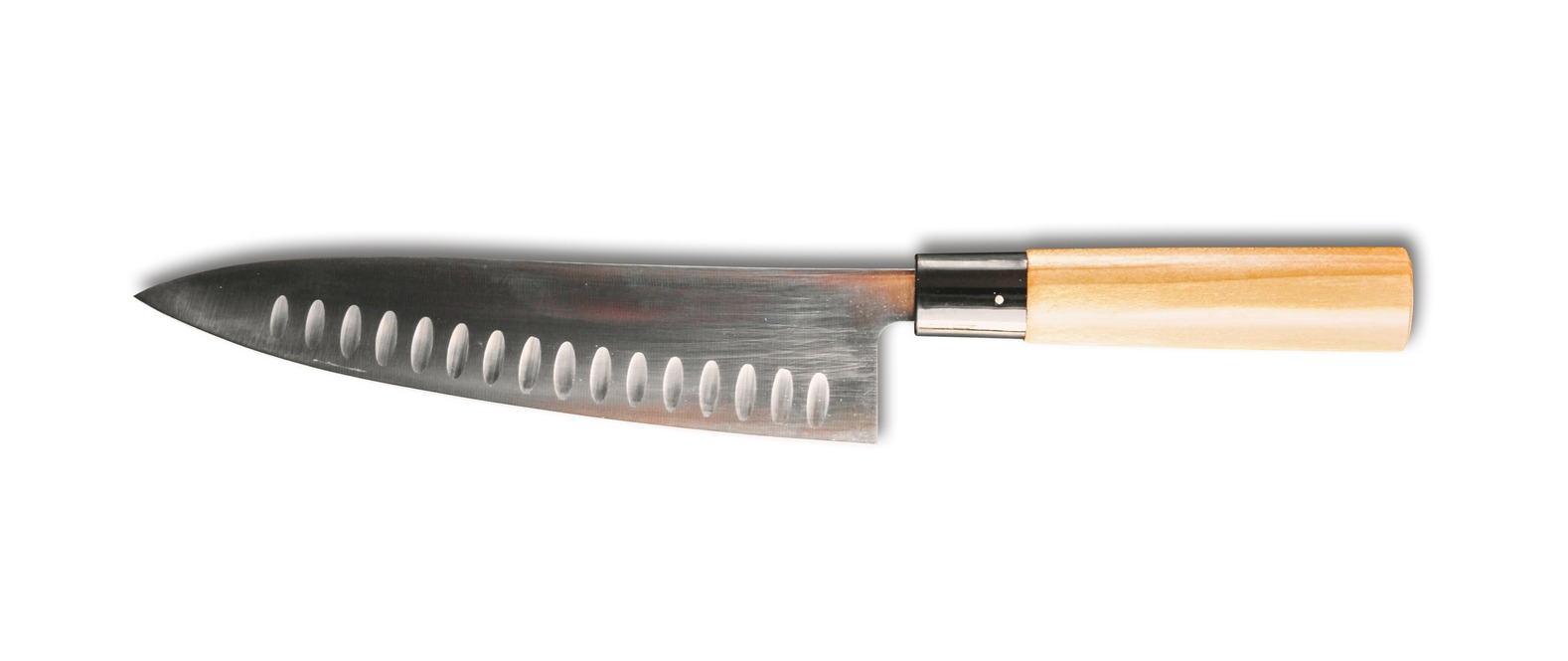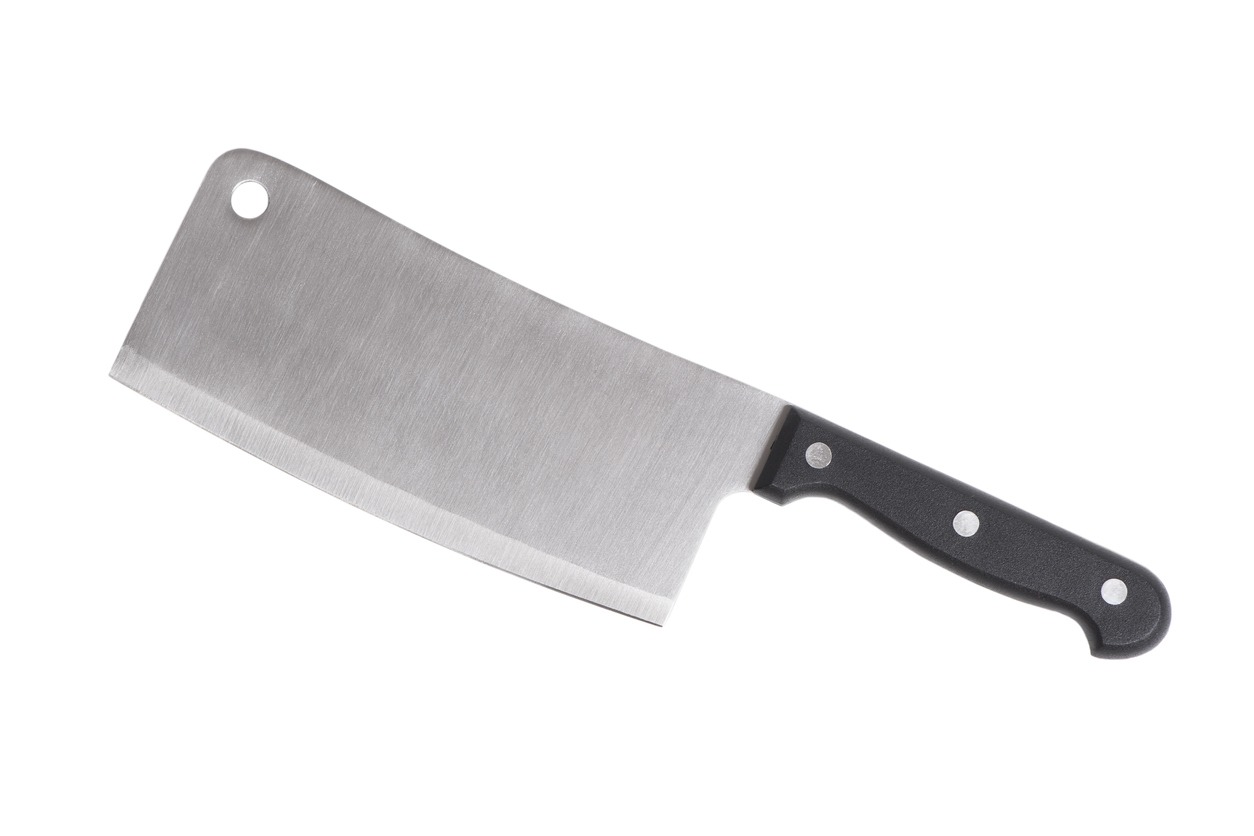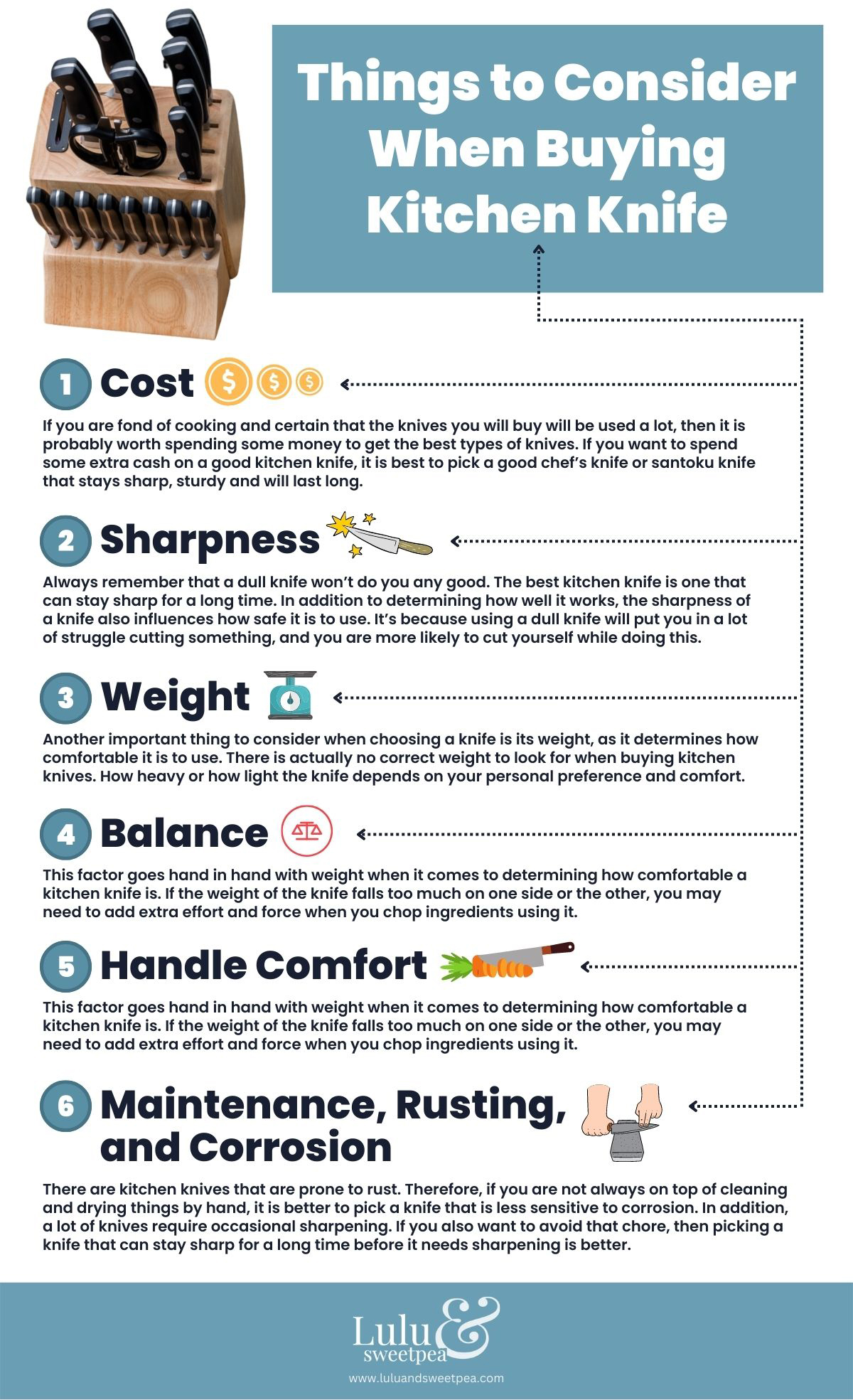Your meal preparation can significantly improve by having the proper set of knives in your kitchen. Whether you’re a professional cook or a novice home cook, having suitable knives for your regular cooking activities is essential. Many knives are on the market, so deciding which ones you need might take time and effort. The most practical knives for any kitchen will be covered in this post. These knives are durable and versatile and can handle most of your regular cooking demands. Having the right pair of knives will increase the effectiveness and enjoyment of your cooking, whether you are slicing meat or chopping vegetables.
Chef’s Knife
The chef’s knife, also known as a French knife, is a versatile kitchen knife that is an absolute must-have for any cook, amateur or expert.
The blade of a chef’s knife is usually between 6 and 12 inches long, with an average blade length of 8 inches. It can be used for chopping, slicing, dicing, and mincing thanks to its wide, curved blade that tapers to a sharp point.
The many uses of a chef’s knife make it a must-have kitchen tool. It can be used for various purposes in the kitchen, including slicing meat and chopping veggies. In addition, the rocking motion made possible by the blade’s curved shape makes chopping and mincing food quick and easy.
Another perk of a chef’s knife is how it feels in your hand because of its weight and equilibrium. A decent chef’s knife will have a sturdy, ergonomic handle that allows the chef to exert maximum control over the knife’s cutting edge. Due to its well-balanced design, the knife can be held and used extended without causing hand fatigue.
Paring Knife
For peeling, trimming, and cutting small fruits and vegetables, use a paring knife, which is a small, pointed-bladed knife. It usually has a blade length of three to four inches and a pointed, narrow tip that makes it simple to control in small areas. Because of its versatility and accuracy, a paring knife is one of the most useful tools to have in any kitchen.
When peeling fruits and vegetables or removing blemishes, a paring knife’s sharp edge provides for precise cutting and trimming. Furthermore, a paring knife’s modest size makes it simple to grip and operate even with small or delicate materials.
The shape of the blade also enables precise cutting and shaping, making it perfect for prepping cheese platters or creating cheese garnishes. Furthermore, paring knives can separate the curd from some cheeses, such as brie or camembert. Speaking of cheese, did you know that the global output of cheese exceeds the combined global production of tea, tobacco, coffee, and cocoa beans? More fun tidbits and information about cheese can be found here!
Bread Knife
A kitchen knife made explicitly for cutting bread is known as a bread knife. It includes a hefty, serrated blade that simplifies slicing bread while preventing the soft inside from being crushed or torn.
One of its key advantages is a bread knife’s capacity to slice through crusty bread without crushing or squeezing the delicate inside. It becomes a necessary tool for anyone who often bakes or purchases bread and those who prefer sandwiches or toast.
Bread knives are available in various sizes and designs, with blade lengths between 6 and 12 inches. They may be composed of materials like carbon steel or stainless steel and may have a straight or curved blade.
Serrated Utility Knife
A kitchen knife with a serrated edge that may be used for a range of tasks is called a serrated utility knife. You can easily slice bread, meats, fruits, and veggies with this multipurpose knife.
One of its key advantages is a serrated utility knife’s ability to cut through foods with a hard outside and a soft interior without crushing or breaking the food. Although a straight-edge knife might struggle, its serrated edge enables smooth, crisp slices through tomatoes, citrus fruits, and crusty bread.
With a blade length of approximately 5 to 7 inches, serrated utility knives are ideal for medium-sized slicing chores like cutting sandwiches, portioning meats, or trimming vegetables.
Serrated utility knives can readily cut through tough or fibrous foods and require less maintenance than other types of knives, making them ideal for outdoor use, such as camping or picnicking.
Santoku Knife
A Santoku knife is another multipurpose Japanese cooking tool that resembles a chef’s knife in the West but has a shorter, wider blade and a slightly beveled edge. Santoku, which means “three virtues” loosely, alludes to the ability of the tool to execute the three operations of slicing, dicing, and mincing.
The blade of a Santoku knife normally measures between 5 and 8 inches, with 7 inches being the most typical length. The blade is crafted from premium steel and has a razor-sharp edge that makes it simple to cut through fruits, vegetables, meat, and fish. Unlike a straight blade, the blade’s unusual shape allows for a rocking motion during chopping, making it easier to wield.
Cleaver
Chopping and slicing through bone, meat, and vegetables require a big, heavy knife with a thick blade, which is precisely what a cleaver provides. It has a rectangular blade is both sharp and flat, making it easy to transfer chopped ingredients.
A cleaver’s versatility is one of its main advantages. From slicing through thick slabs of meat to chopping veggies and smashing garlic cloves, this multifunctional tool has countless uses in the kitchen. Because of its heft and weight, it is also useful for chopping through thick cuts of meat like beef and pig.
A cleaver may be utilized in place of a mallet to tenderize flesh or crush spices or garlic. The flat base of some cleavers is ideal for pounding ginger or lemongrass.
Things to Consider When Buying a Kitchen Knife
When purchasing a kitchen knife, it is critical to consider aspects other than the blade and handle materials. Cost should be determined by regular use, with chef’s and santoku knives being worthwhile investments in longevity and dependability. Sharpness is essential for efficiency and safety, so choose a sharp knife for an extended time. Personal preference and comfort are the most critical factors to consider regarding weight. Select the knife that best meets your requirements. Check the infographic below for more detailed information on things to consider before buying a kitchen knife.
In conclusion, whether you’re a weekend warrior in the kitchen or a full-time chef, you need a good pair of knives. These blades can be used for a variety of purposes, from chopping veggies to slicing through tough meats and even bread. Having a set of good knives will make preparing more fun and less laborious. If you have these essential knives, you can tackle any kitchen obstacle that you face.


